



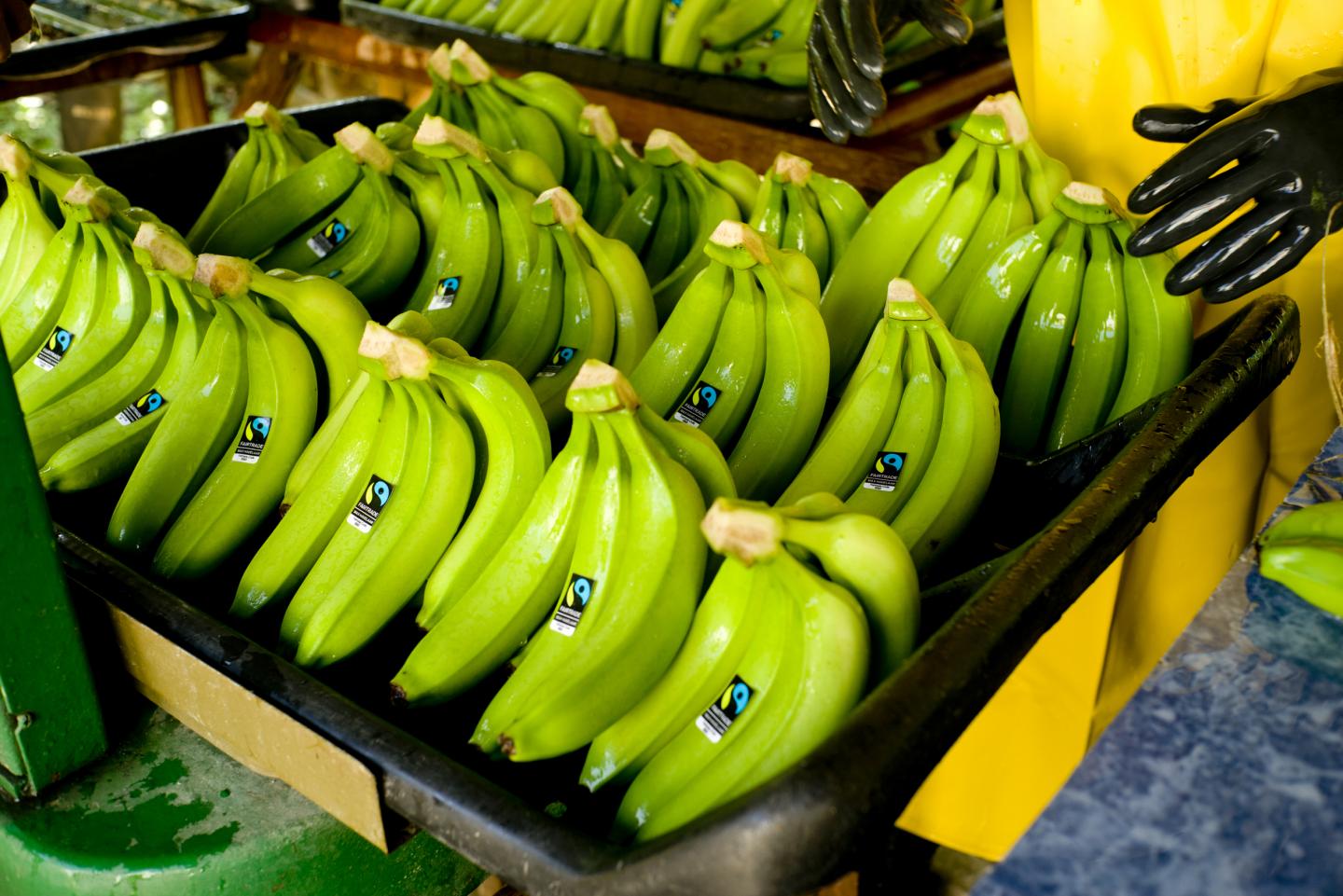
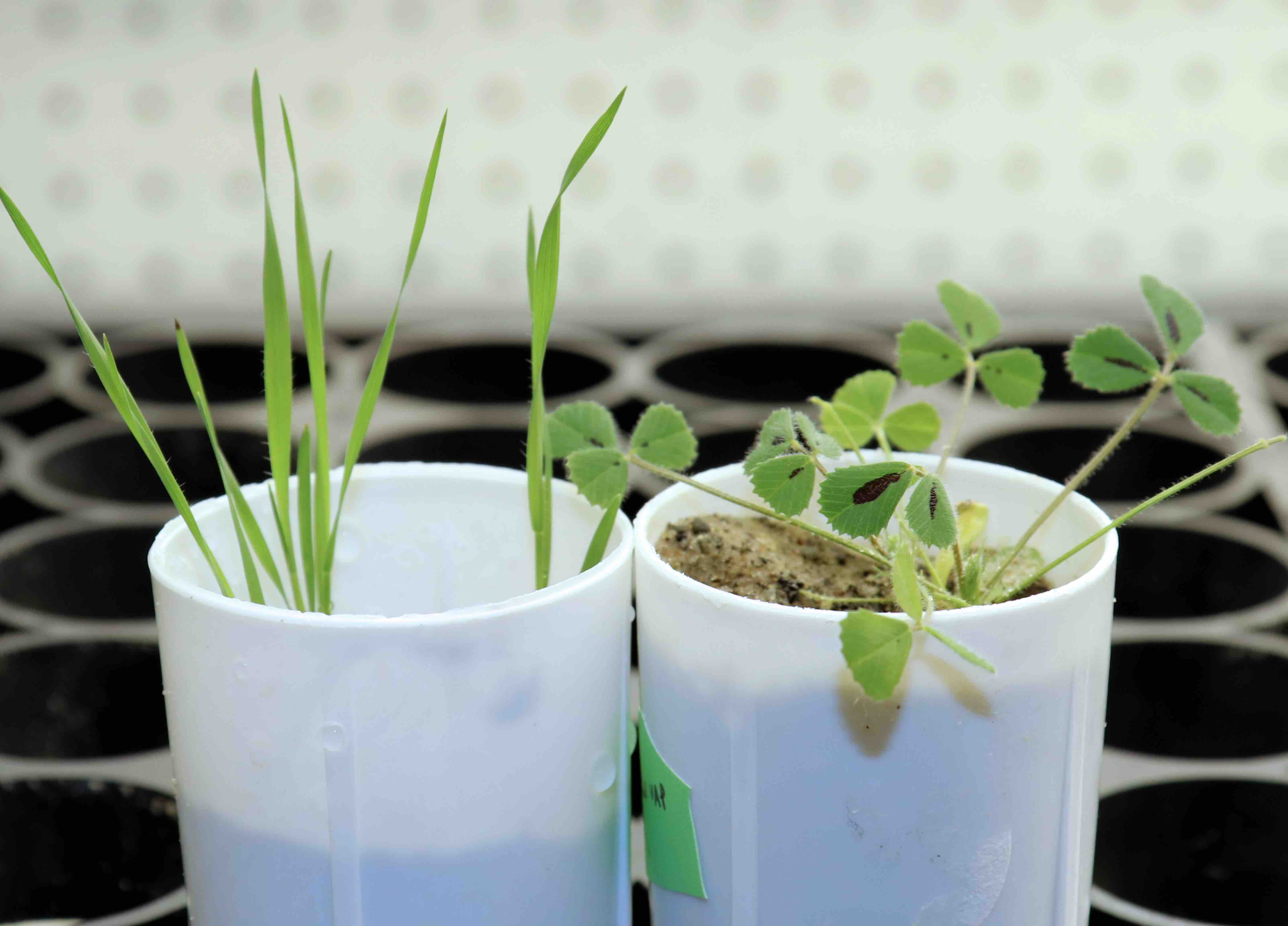
Over-fertilization of agricultural fields is a huge environmental problem. Excess phosphorus from fertilized cropland frequently finds its way into nearby rivers and lakes. A resulting boom of aquatic plant growth can cause oxygen levels in the water to plunge, leading to fish die-offs and other harmful effects.
Researchers from Boyce Thompson Institute have uncovered the function of a pair of plant genes that could help farmers improve phosphate capture, potentially reducing the environmental harm associated with fertilization.
The work was published in Nature Plants.
The discovery stems from Maria Harrison’s focus on plants’ symbiotic relationships with arbuscular mycorrhizal (AM) fungi. Harrison is the William H. Crocker Professor at BTI and an adjunct professor in Cornell University’s School of Integrative Plant Science.
AM fungi colonize plant roots, creating an interface where the plant trades fatty acids for phosphate and nitrogen. The fungi also can help plants recover from stressful conditions, such as periods of drought.
But feeding the AM fungi with fatty acids is costly, so plants don’t let this colonization go unchecked.
To discover how plants control the amount of fungal colonization, Harrison and Lena Müller, a postdoctoral scientist in her lab, looked at genes that encode short proteins called CLE peptides in the plants Medicago truncatula and Brachypodium distachyon.
CLE peptides are involved in cellular development and response to stress, and they are present throughout the plant kingdom, from green algae to flowering plants.
The researchers found that two of these CLE genes are key modulators of AM fungal symbiosis. One gene, called CLE53, reduces colonization rates once the roots have been colonized. Another gene, CLE33, reduces colonization rates when there is plenty of phosphate available to the plant.
“Being able to control fungal colonization levels in plant roots and maintain the symbiosis even in higher phosphate conditions might be useful to a farmer,” Harrison said. “For example, you may want the other beneficial effects of AM fungi, like nitrogen uptake and recovery from drought, as well as further uptake of phosphate”
“You might be able to achieve these benefits by altering the levels of these CLE peptides in the plants,” Harrison added.
Müller found that the CLE peptides act through a receptor protein called SUNN. In collaboration with Harro Bouwmeester and Kristyna Flokova of the University of Amsterdam, she found that the two CLE peptides modulate the plant’s synthesis of a compound called strigolactone.
Plant roots exude strigolactone into the soil, and the compound stimulates AM fungi to grow and colonize the root. Once the roots are colonized or there is plenty of phosphate, the CLE genes suppress the synthesis of strigolactone, thus reducing any further colonization by the fungi.
“In the early 2000’s, researchers found that plants had a way to measure and then reduce colonization,” Müller said. “But until now, nobody really understood the molecular mechanism of that dynamic.”
The researchers’ next steps will include figuring out the molecules that turn on the CLE genes in response to colonization and high phosphate levels.
Müller also plans to compare the two CLE peptides from this study with additional CLE peptides that have different functions.
“The CLE peptides are all so similar but they have completely different functions,” Müller said. “It will be very interesting to see why that is.”
Read the paper: Nature Plants
Article source: Boyce Thompson Institute
Image: Boyce Thompson Institute
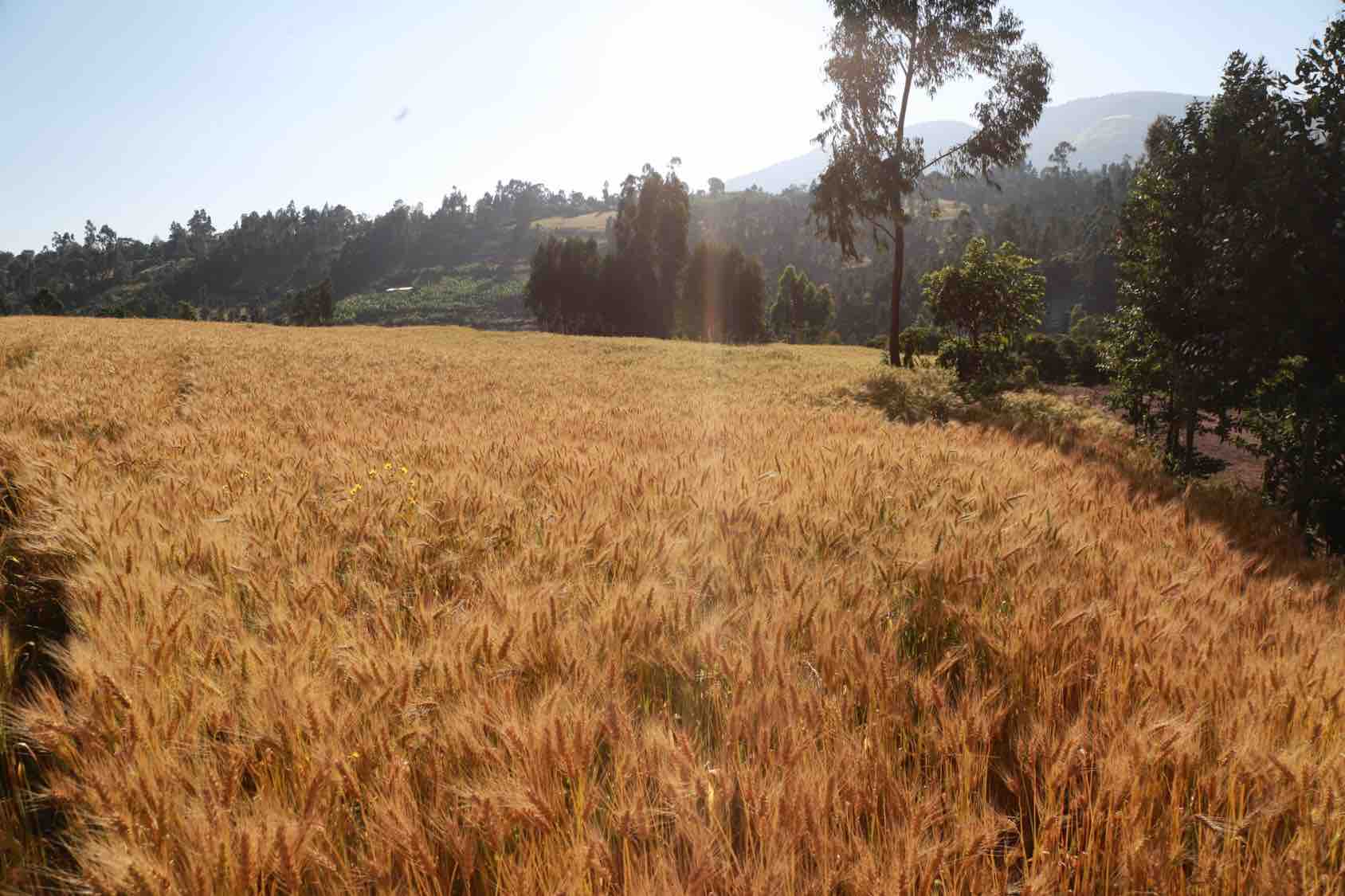
Scientists identified significant new chromosomal regions for wheat yield and disease resistance, which will speed up global breeding efforts.
Using the full wheat genome map published in 2018, combined with data from field testing of wheat breeding lines in multiple countries, an international team of scientists has identified significant new chromosomal regions for wheat yield and disease resistance and created a freely-available collection of genetic information and markers for more than 40,000 wheat lines.
Reported in Nature Genetics, the results will speed up global efforts to breed more productive and climate-resilient varieties of bread wheat, a critical crop for world food security that is under threat from rising temperatures, rapidly-evolving fungal pathogens, and more frequent droughts, according to Philomin Juliana, wheat scientist at the International Maize and Wheat Improvement Center (CIMMYT) and first author of the new study.
“This work directly connects the wheat genome reference map with wheat lines and extensive field data from CIMMYT’s global wheat breeding network,” said Juliana. “That network in turn links to over 200 breeding programs and research centers worldwide and contributes to yield and other key traits in varieties sown on nearly half the world’s wheat lands.”
The staple food for more than 2.5 billion people, wheat provides 20% of human dietary calories and protein worldwide and is critical for the nutrition and food security of hundreds of millions of poor persons in regions such as North Africa and South Asia.
“Farmers and societies today face new challenges to feed rising and rapidly-urbanizing populations, and wheat epitomizes the issues,” said Ravi Singh, CIMMYT wheat breeder and corresponding author of the study. “Higher temperatures are holding back yields in major wheat-growing areas, extreme weather events are common, crop diseases are spreading and becoming more virulent, and soil and water are being depleted.”
Juliana said the study results help pave the way to apply genomic selection, an approach that has transformed dairy cow husbandry, for more efficient wheat breeding.
“Molecular markers are getting cheaper to use; meanwhile, it’s very costly to do field testing and selection involving many thousands of wheat plants over successive generations,” Juliana said. “Genome-wide marker-based selection can help breeders to precisely identify good lines in early breeding generations and to test plantlets in greenhouses, thereby complementing and streamlining field testing.”
The new study found that genomic selection could be particularly effective in breeding for wheat end-use quality and for resistance to stem rust disease, whose causal pathogen has been evolving and spreading in the form of highly-virulent new races.
The new study also documents the effectiveness of the global public breeding efforts by CIMMYT and partners, showing that improved wheat varieties from this work have accumulated multiple gene variants that favor higher yields, according to Hans-Joachim Braun, director of CIMMYT’s global wheat program.
“This international collaboration, which is the world’s largest publicly-funded wheat breeding program, benefits farmers worldwide and offers high-quality wheat lines that are released directly to farmers in countries, such as Afghanistan, that are unable to run a full-fledged wheat breeding program,”
Braun explained.
The study results are expected to support future gene discovery, molecular breeding, and gene editing in wheat, Braun said.
Together with more resource-efficient cropping systems, high-yielding and climate-resilient wheat varieties will constitute a key component of the sustainable intensification of food production described in Strategy 3 of the recent EAT-Lancet Commission recommendations to transform the global food system. Large-scale genomics will play a key role in developing these varieties and staying ahead of climate- and disease-related threats to food security.
Read the paper: Nature Genetics
Article source: CIMMYT
Image: Apollo Habtamu/CIMMYT
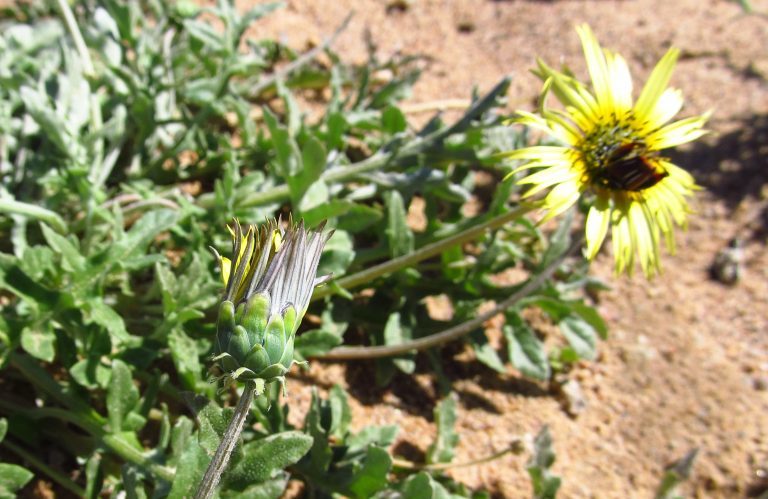
Species of daisy that close their flowers at night, produce colour in their exposed lower petals that makes them harder to spot for herbivores, reducing herbivory rates of flowers. The findings are presented in the British Ecological Society journal Functional Ecology.
Researchers from Stellenbosch University, South Africa found that tortoises, one of the main herbivores of the daisies, were unable to distinguish the lower petal surfaces against a green leaf background. Tortoises prefer to eat protein-rich flowers over leaves, but when confronted with closed flowers, they showed no preference between them.
When the researchers modelled the colours of the lower petal surfaces in the vision of other herbivores, they also found these colours to be indistinguishable from leaves.
In contrast, species of daisy that do not close at night produced the same colouration on their lower petals as the upper petals exposed to pollinators.
Plants face an evolutionary conflict between having flowers that attract pollinators while avoiding herbivores. Often plants defend themselves chemically, but this can have adverse effects on pollination.
“When plants defend their flowers chemically, the pollination interactions can be negatively influenced. Our study shows a novel way in which flowers can avoid herbivores, without compromising pollination interactions.
– says Dr. Jurene Kemp, lead author of the study.
“These flowers can potentially circumvent the conflict of attracting both pollinators and herbivores by producing attractive colours on the surfaces that are exposed to pollinators (when flowers are open) and cryptic colours that are exposed when herbivores are active (when flowers are closed).”
In Namaqualand, South Africa, where the research took place, daises bloom annually in a spring flowering. This makes preserving flowers, responsible for reproduction, particularly important.
The researchers examined the colouration of 77 Asteraceae species, modelling how they appear in the visual systems of chameleons, horses and goats as proxies for tortoises and larger herbivores in the area, like springbok. They then tested the preferences of real tortoises with both open and closed flowers against leaf backgrounds.
Not all Asteraceae species that close their flowers had cryptically coloured lower petal surfaces, but in the experiments, the tortoises did not readily eat these flowers. Dr. Kemp said, “One interesting question would be to test whether non-cryptic flowers have chemical defences, and whether these chemical defences are absent in the cryptic flowers.”
On further research Dr. Kemp said “Unfortunately, we could only do this using one plant family in one botanical region, it would be great to see if other plant species also use colour to avoid herbivores.”
The researchers would also have liked to use larger herbivores such as springboks in their behavioural experiments, but Dr. Kemp adds that “this was practically not possible.”
Read the paper: Functional Ecology
Article source: British Ecological society Press Office
Image: Jurene Kemp

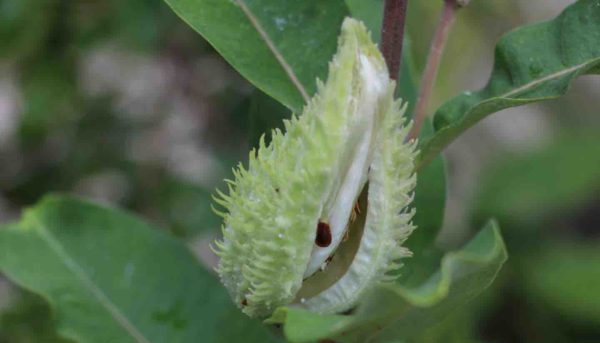
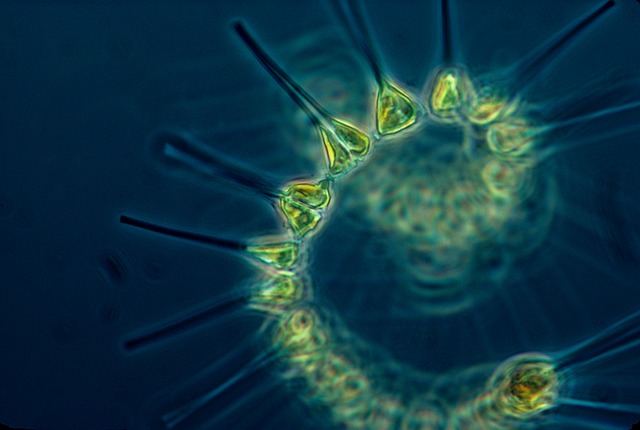
An international team of Earth system scientists and oceanographers has created the first high-resolution global map of surface ocean phosphate, a key mineral supporting the aquatic food chain. In doing so, the University of California, Irvine-led group learned that marine phytoplankton – which rely on the trace nutrient – are a lot more resilient to its scarcity than previously thought.
The researchers’ findings, published today in Science Advances, have important implications for climate change predictions. Ocean algae, or phytoplankton, absorbs a significant amount of carbon dioxide from the Earth’s atmosphere, thereby providing a valuable service in regulating the planet’s temperature.
“Understanding the global distribution of ocean nutrients is fundamental to identifying the link between changes in ocean physics and ocean biology,” said lead author Adam Martiny, UCI professor of Earth system science and ecology & evolutionary biology. “One of the outcomes of having this map is that we can show that plankton communities are extremely resilient even in nutrient-deficient environments. As lower ocean nutrient availability is one of the predicted outcomes of climate change, this may be good news for plankton – and for us.”
Dissolved inorganic phosphate plays an important biogeochemical role in the ocean habitat but is notoriously difficult to detect. Phosphorus is a crucial element of essential-to-life molecules such as adenosine triphosphate, which stores and transfers chemical energy between cells, and those found in DNA. Earth has a finite amount of phosphorus – unlike many other nutrients useful to phytoplankton – and it’s rare in the ocean.
Knowing how much is out there, and where, helps scientists understand the dynamics of the ocean food web and how it will be affected by alterations in ocean chemistry brought on by climate change. Martiny and his colleagues analyzed more than 50,500 seawater samples collected on 42 research voyages covering all of Earth’s ocean basins.
Martiny said that in addition to identifying regions where the mineral is in short supply, the team was able to discover previously unknown patterns of phosphate levels in major ocean basins in the Atlantic and Pacific.
“We have for too long had this simplistic view of a nutrient-rich ocean at high latitudes and ocean deserts at low latitudes,” he said. “However, in this paper we argue that our current predictions of nutrient stress may be too dire and that marine organisms are able to handle a limited supply of phosphate better than we previously thought.”
Read the paper: Science Advances
Article source: University of California – Irvine
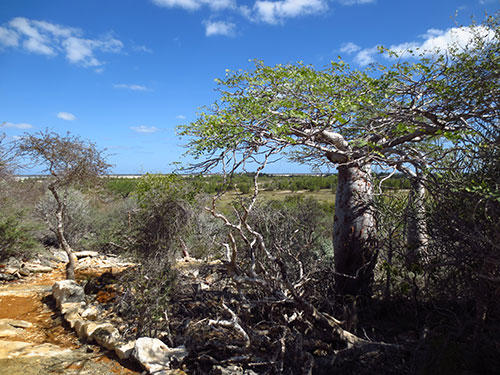
In the context of progressing towards new targets for a post-2020 Global Biodiversity Framework, the debate remains on whether the emphasis should be on protected area coverage or protected area effectiveness. “It is worrying that we still know so little about how effective protected areas are, especially in relation to management inputs” says Dr. Johanna Eklund from the University of Helsinki.
A recent study she led compared common indicators of Protected Area Management Effectiveness, used by for example the Global Environmental Facility, WWF and other conservation actors, to satellite-based estimates of reduced deforestation in Madagascar. The international team found that overall protected areas were reducing deforestation within their borders, although variation in effectiveness existed, highlighting also clear needs for improvements. The variation, however, was not explained by management input assessments conducted following common global protocols and widely used by funders and non-governmental organizations.
“Self-reports of management effectiveness were generally good, with rather small differences between areas. Such lack of resolution may hinder the use of management-effectiveness indicators when identifying priorities for management investments at national level” says Dr Mar Cabeza from the University of Helsinki and co-author of the new study.
Nonetheless, the results, which were recently published in the scientific journal Conservation Science and Practice, also carry some good news: approximately half of the protected areas studied showed no deforestation at all inside their borders, and only three of the areas showed very high levels of deforestation. What is more, they also showed that 29 out of the 36 studied PAs had an impact in mitigating deforestation within their borders, i.e. without protecting these areas, the situation would have been much gloomier.
“It is inspiring to be able to report that conservation actions matter”, says Dr Eklund. “Too much doom and gloom can passivate even the most enthusiastic of us; leading to despair and the feeling that both climate change and biodiversity loss are lost causes.”
Not just paper parks
Tropical forests are of utmost importance for both biodiversity and climate change mitigation, yet under increased pressures to clear land for agriculture and production. One of the most widely used policy tools currently available to avert habitat loss and deforestation is the establishment of protected areas. However, previous research has highlighted that many protected areas are so-called paper parks, i.e. established on paper but lacking active management to ensure they have the capacity to mitigate threats.
This is why it is important to investigate how protected areas perform after they have been established. Why do some protected areas seem to be effective in avoiding high pressures of logging, whereas others cannot mitigate them?
Evaluating conservation actions
To find out the impact a conservation intervention or programme has had, there is a need to evaluate the outcomes compared to what the situation would have been had the intervention not taken place. “A bit similar as in medical science”, says Dr Eklund, “where the effect of a pill or treatment is evaluated against a control group. The challenge in conservation science is that we often lack a suitable baseline to compare to; many protected areas have been established a long time ago and in areas of lower pressures, in order to avoid land conflicts in more productive landscapes. This needs to be accounted for in studies evaluating conservation effect.”
Does management matter and how?
The team compiled unique data on management inputs and how this changed over time. They had access to information on how adequate levels of personnel and funding had been, how well different monitoring and enforcement strategies had been implemented, and how the collaboration with local communities and other stakeholders had developed. Surprisingly enough though, protected areas with higher management scores did not perform better in terms of avoiding deforestation. The assessment was only able to capture an extreme case where poor management was linked to a protected area showing increased deforestation, that is, even higher levels of deforestation than predicted. The authors suggest that one explanation for the general lack of correlation may be that management levels of the PAs in Madagascar were already at basic to sound levels and located in areas with low rates of forest loss, and therefore this set of PAs provides little variation with which to explore the effect of different levels of management. Moreover, previous studies have shown that local managers identify weak governance at the national level as an obstacle for effective management, suggesting the broader sociopolitical context might matter more than local management.
Policy implications
The results have policy implications both for Madagascar and internationally. The local conservation sector in Madagascar can use the results to prioritize key areas for development and target limited conservation resources to areas where they might make the biggest difference. The results are also of relevance for the post-2020 targets of the Convention on Biological Diversity. Dr Eklund hopes that different measures of effectiveness, not merely an increase in protected area coverage, would be better incorporated into the wording of the new targets. “Continued efforts to carry out quantitative impact evaluations of protected area effectiveness, and collection of management effectiveness data, are needed, as our study shows that they can complement each other in displaying different facets of how PAs perform”, concludes Dr Eklund.
Read the paper: Conservation Science and Practice
Article source: University of Helsinky
Author: RIITTA-LEENA INKI
Image: Johanna Eklund